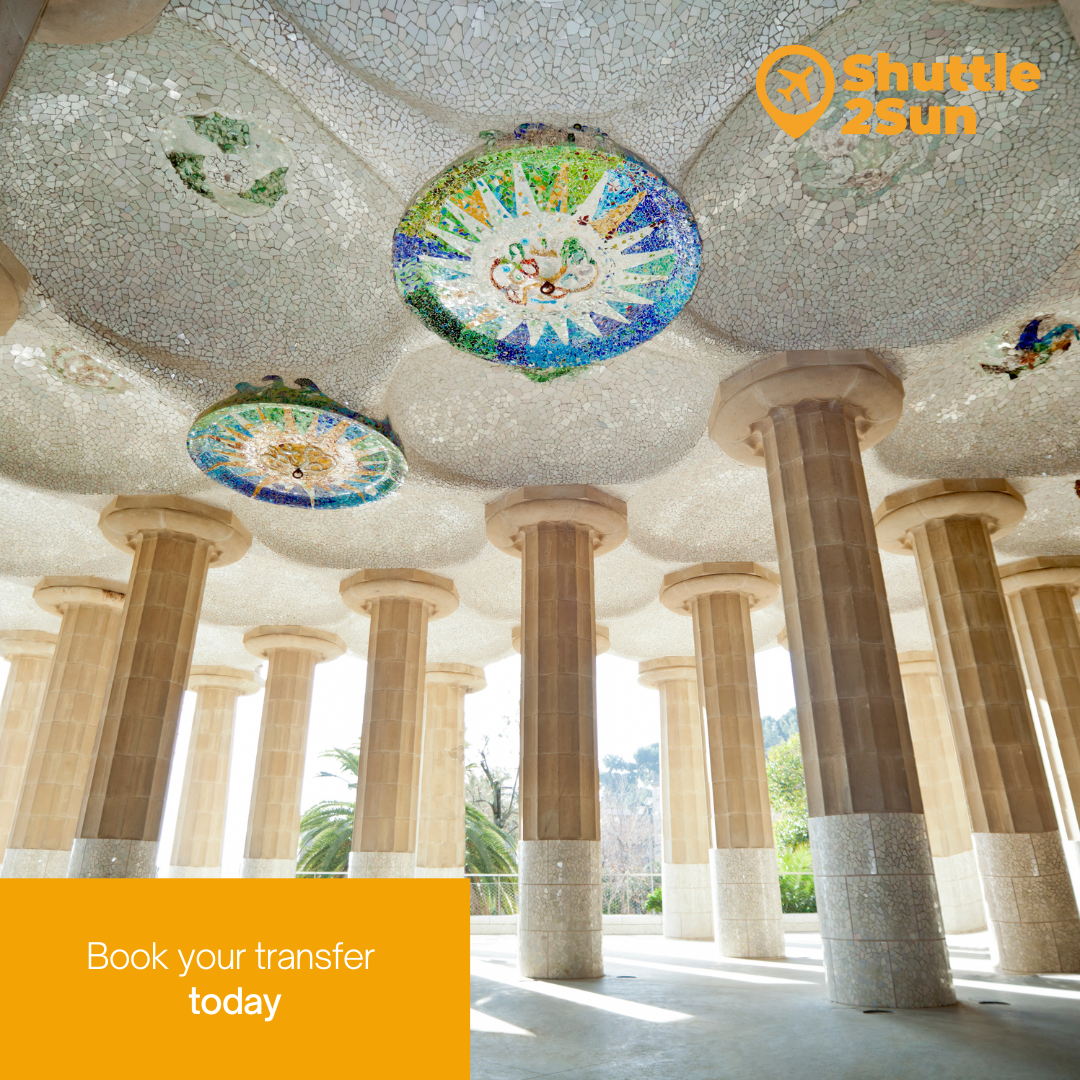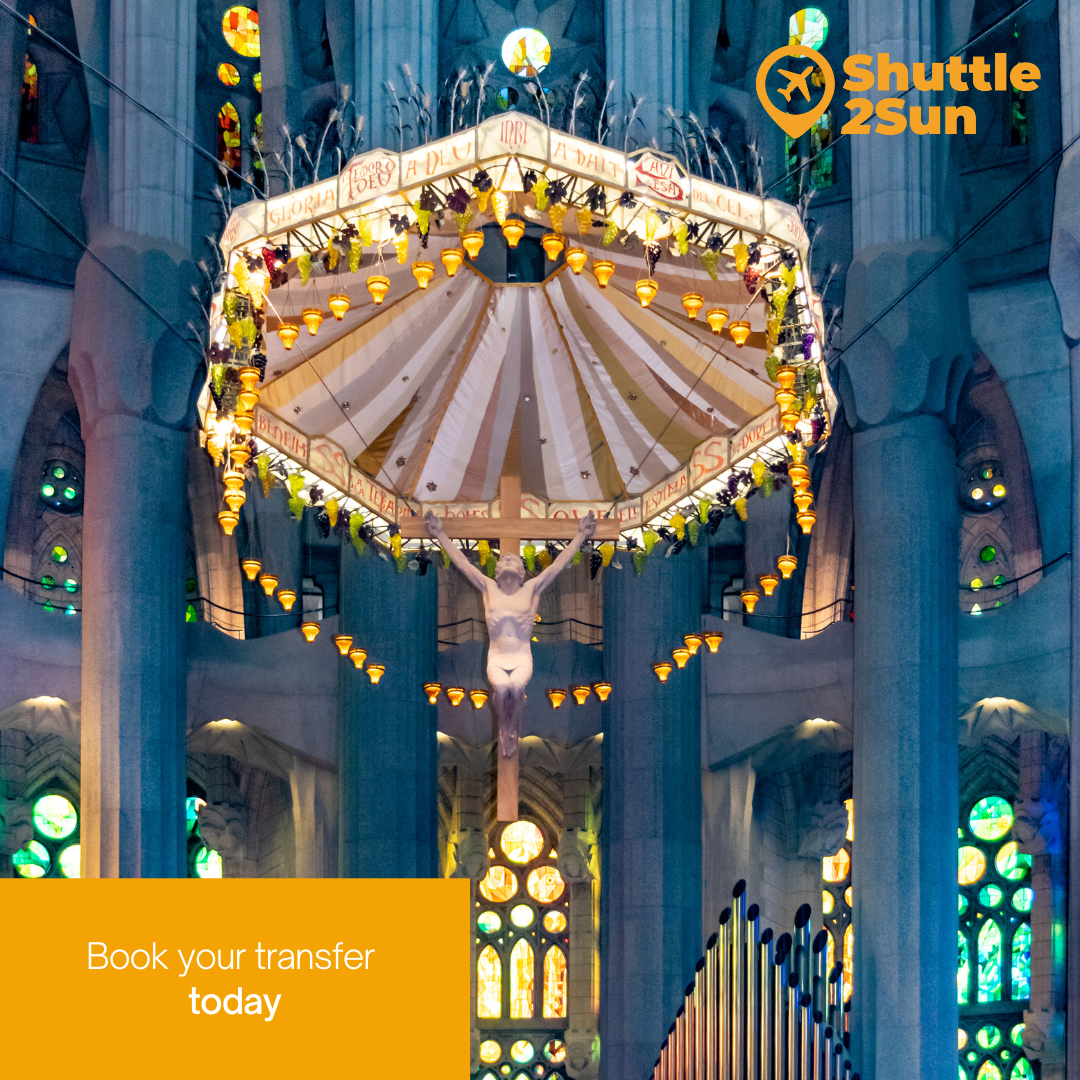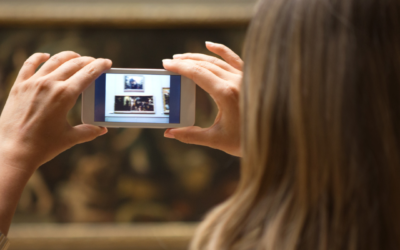If you are thinking of visiting Barcelona, the capital of Catalonia, one specific image will surely come to mind: the Sagrada Familia. This great unfinished basilica has been and continues to be the most characteristic building and one of the most important tourist attractions in Barcelona since it was first built in 1882. Every day, thousands of tourists flock to its feet to admire its exuberant modernist architecture soaring up to the sky. But you should know that, beyond this work, Barcelona boasts numerous creations by Antoni Gaudí, the leading figure in Catalan Modernisme. Here we explain them all to you.
If you are organising your trip to Barcelona, Shuttle2Sun offers you its shared transfer services and private transfer services, low-cost and sustainable, from Barcelona airport, Barcelona port, Reus airport, Girona airport and Camp de Tarragona AVE train station.
Who is Antoni Gaudí
In order to understand the works, it is first important to know a little about its author. Antoni Gaudí was born in 1852, in Reus or Riudoms, in Catalonia; and he grew up learning to build with his hands, as his father and grandfather were coppersmiths. From the age of 18, he studied architecture in Barcelona, and in 1883, he built the Casa Vicens, the first of his most outstanding works.
From then on, he began to apply the modernist style to his creations, which he later reflected in his greatest treasures, such as the Palau Güell and Park Güell, in collaboration with his friend and associate Eusebi Güell, a wealthy industrialist. Around 1900, he experienced his great splendour as an artist, building Casa Batlló and Casa Milà, among others, and 15 years later he decided to devote himself exclusively to his masterpiece, the Sagrada Familia, until his unexpected death in 1926, when the basilica was left unfinished.
Sagrada Familia
A visit to the Sagrada Familia is a must during your stay in Barcelona. Its construction has been going on for 141 years, and there is still the last push to complete the most famous basilica in the world. If you stand in front of it, you’ll see that its spectacular tall conical towers seem endless, and although Gaudí only managed to build one of the towers, the project envisages a total of 18. The Sagrada Familia also stands out for its abundant ornamentation, its large porticoes and the originality of its windows, arranged in the shape of a spiral.

If you decide to go inside, you will be able to enjoy its incredible stained-glass windows, its vertiginous curves, the presence of nature in every corner and its naturalist-modernist religious architecture. In short, you will live a unique experience that will allow you to get to know Gaudí in depth. Moreover, if you visit the crypt, you will discover the author’s tomb in one of the seven chapels that make up the crypt.
Casa Batlló
In 1903, Antoni Gaudí was commissioned by Mr. Josep Batlló i Casanovas, an important textile industrialist, to completely renovate the building located at number 43 Passeig de Gràcia. The architect carried out a major remodelling of the entire façade, converting its exterior and interior into an extraordinary work of art, inspired by the forms found in nature. If you visit Casa Batlló, you can enjoy an immersive experience, where you will learn about the architect and the architecture of the building.
La Pedrera
Another building not to be missed if you want to get to know the work of Antoni Gaudí is La Pedrera, also known as Casa Milà. It is located at number 43 Passeig de Gràcia, which used to connect the city with the Villa de Gracia. Its façade has more than 6,000 blocks of stone and a total of 32 balconies with original iron grilles. In this work, the architect also applied his naturalist style, reflecting different elements of nature, such as the sea and the flora, and introducing religious elements, such as the four-armed cross.
Remember that Shuttle2Sun offers its shared transfer services and private transfer services, low-cost and sustainable, so you can move, comfortably, to Barcelona, from Barcelona airport, Barcelona port, Reus airport, Girona airport and AVE Camp de Tarragona train station.

Park Güell
It is a must to spend a few hours strolling around Park Güell, one of the most emblematic open-air spaces in Barcelona. This park, now public, was built with the intention of being a residential area for wealthy families.
Park Güell includes various spaces, such as the Greek Theatre or Plaza de la Naturaleza, which was intended to be the setting for large open-air shows; below it is the Sala Hipóstila, which was used as a market; the Pórtico de la Lavandera, which leads to the gardens of Casa Larrard, where Güell lived; the Dragon Stairway, presided over by the famous figure of the salamander, covered with ‘trencadís’ (a mosaic made from fragments of tiles).
You will also enjoy the streets, paths and viaducts that allow you to stroll through the different parts of the park; the main entrance, with the two pavilions that form the gatehouse; and, finally, the Austrian Gardens.
Casa Vicens
Gaudí’s first important work, just after finishing his career, was the Casa Vicens, in the Villa de Gracia, commissioned by Manuel Vicens i Montaner, where he applied his first influences and knowledge. If you take the time to get to know it closely, you will see the author’s youth reflected in it.
Other works by Gaudí in Barcelona
Other works commissioned by Eusebi Güell include the Palau Güell, measuring more than 2,850 m²; the Güell Pavilions; the Bodegas Güell; and the Crypt of the Colonia Güell.
On the other hand, Antoni Gaudí also carried out other works such as the Casa Calvet, located in the right-hand Eixample; the Torre Bellesguard, one of the most unknown of the author’s works, located at the foot of the Collserola mountain range; the Teresianas College, in neo-Gothic style; the lampposts in Plaça Reial and Pla de Palau, a work commissioned by the city council; the fountain of Hercules and Pergola, in the gardens of the Royal Palace of Pedralbes; the mosaic of the Church of Sant Pacià; and, finally, the entrance gate of the Finca Miralles.
If you are a lover of history, art and architecture, we recommend that you visit some of the places we have explained. Remember that with Shuttle2Sun‘s shared transfer services and private transfer services, low-cost and sustainable, you can move to Barcelona, from Barcelona airport, Barcelona port, Reus airport, Girona airport and the AVE Camp de Tarragona train station.



